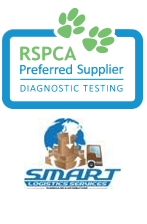In this update:
- Current situation
- LIC introduce daily semen testing
- Farm Risk Assessment Profile
- Reminder on compensation after commercial testing
- Reminder on certification of late gestation cows
See previous updates from the NZVA and answers to frequently asked questions at www.nzva.org.nz/myco
Current situation
As at 7 September there are 37 active Infected Properties. The first infected farm has been confirmed in Northland.
All active infected properties are under quarantine controls. These controls restrict the movement of stock and equipment on and off those farms to contain the disease. Active infected properties have yet to be depopulated, cleaned, and have their restrictions lifted.
Active farms by region:
Northland: 1
Hawke’s Bay: 2
Manawat?: 1
Waikato: 3
Wairarapa: 1
Tasman: 1
Canterbury: 18
Otago: 4
Southland: 6
Sign up to weekly M. bovis updates from the Ministry for Primary Industries (MPI).
LIC introduce daily testing
LIC have introduced new daily M. bovis testing to provide farmers with additional reassurance through the dairy mating season.
Each semen collection from their bulls, which artificially inseminate up to 80% of the national dairy herd, will be tested for M. bovis and the results will be confirmed before any semen is distributed to farmers.
Farm Risk Assessment Profile
The NZVA will be contacting all member veterinarians at large animal practices shortly with information on how to get access the Farm Risk Assessment Profile (FRAP) system.
FRAP will soon be available to veterinarians to use with dairy clients (a version for service bulls will follow shortly after) and will allow for understanding of a farm’s risk profile. The intention is to link this to a commercial testing protocol for M. bovis.
The NZVA is a strong advocate for the FRAP which will allow veterinarians to engage in a robust on-farm discussion with clients about their risk, and inform them of the relative merits of engaging in commercial testing for M. bovis. There is strong support for the FRAP from other parts industry, including DairyNZ, Federated Farmers and Beef and Lamb NZ, and farmers.
Reminder on compensation after commercial testing
As mentioned in our update on the 15 August, the NZVA has been actively engaging with the MPI Response team about the process for commercial testing for M. bovis, which currently exposes a compensation issue for farms outside regulatory control. We will keep you updated as information comes to hand. In the meantime, this is the current situation and process, and our interim advice:
Commercial PCR testing has the potential to individually identify animals as M. bovis positive, through cases found during testing.
Any commercial PCR testing that is done outside the M. bovis response (that is, on animals on any property that has not been issued with a legal notice – IP, NoD, RP) is considered to be outside regulatory control.
If an animal tests positive outside regulatory control, compensation will be paid at slaughter value not full animal replacement value.
The process for managing positive test results from commercial testing is:
- Commercial tests are submitted to the veterinarian’s usual laboratory
- Suspect positive results are referred through to MPI’s Animal Health Laboratories (AHL)
- A positive test result is confirmed by MPI’s AHL
- The farmer is informed by MPI, and regulatory controls are placed on the property.
In the interests of fully informed consent, which is an important cornerstone of a veterinarian’s professional reputation and their client relationships, the testing process should be discussed with clients as part of the conversation when deciding whether to pursue commercial PCR testing. This should now include a conversation about the de-valuing of animals found positive outside of regulatory controls.
Veterinarians are reminded of the limitations of PCR testing, and should be clear that a status can only ever be “Not Detected (at the site swabbed)” or “positive”.
To date only a tiny number of animals have been devalued as a result of returning individual positive tests. However, there can be a significant financial difference between slaughter and full market values, and this could affect more farmers if commercial testing increases. This is particularly relevant in testing of high value animals (eg. studs) and when large numbers of animals are being tested.
If a farm is issued with a legal notice as a result of commercial testing, MPI advises veterinarians to refer farmers to their ICP Manager in the first instance. The ICP Manager will work with the central Response compensation team to provide the information/actions the farmer needs.
Reminder on certification for late gestation cows
As mentioned in our previous updates, the NZVA recommends that the transport of heavily pregnant cows be avoided within four weeks of the planned start of calving. See our guidelines to members.
The intent of the guideline is to support veterinarians being asked to certify as fit-for-transport cows that could give birth, or be in the late stages of pregnancy when long trips, and standing in trucks and in lairage for a prolonged time ? these situations are not acceptable. The NZVA is aware that several cases have recently been certified, and then attracted the attention of MPI Verification Services.
If you are certifying cows in late pregnancy, the NZVA strongly suggests you consult heavily with MPI Verification Services in advance of certifying. See this contact list of MPI Verification Services Veterinarians.
We expect veterinarians will use their good judgement in terms of the general timeframe, variations in biological systems and the animal’s welfare, which is paramount. This includes taking into account the longevity of the journey and potential delays at processing plants that require significant standing time ? potentially overnight. The implications of judgements, and any potential welfare compromise resulting from a veterinarian?s decision, are no different in this scenario than for any other certification process.



